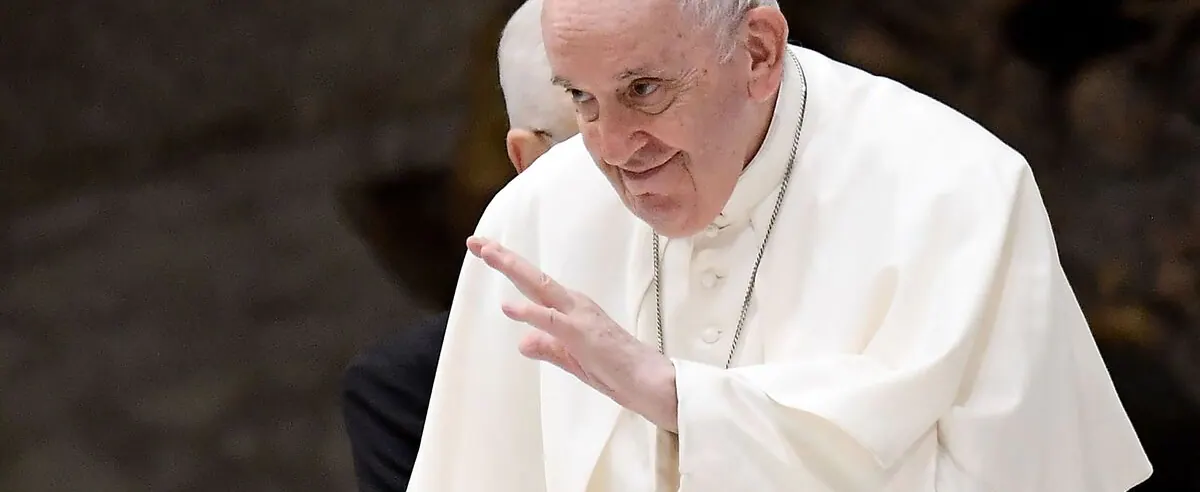Pope Francis, who left the “door open” to a waiver due to his declining health, will create 20 new cardinals from all continents on Saturday, a key step in preparing for his succession.
This consistory, the eighth of Francis’ pontificate since his election in 2013, comes amid speculation about a possible renunciation of the 85-year-old pope, who has been forced for several months to move around in a wheelchair due to knee pain.
A rare fact, the ceremony will be followed by a two-day meeting with all the cardinals from around the world, whom the Argentine pontiff wanted to bring together to discuss the new “Constitution” of the Vatican, which came into force in June.
On Saturday at 4:00 p.m., the pope will create 20 new cardinals during a ceremony at St. Peter’s Basilica in Rome, among which 16 – those under the age of 80 – will be able to participate in the election of his successor.
The appointment of these high prelates is scrutinized by observers who see it as an indication of the possible line of the future spiritual leader of the Catholic Church and its 1.3 billion faithful.
At the end of this consistory, the first since November 2020, Pope Francis will have chosen nearly 90 cardinals out of the current total of 132 voters, or around 68%. A trend that could weigh on the two-thirds majority needed to elect a new pope, even if this choice is always unpredictable.
“Internationalization”
“We always have the impression that there will be continuity, but in reality history says exactly the opposite”, tempers Vaticanist Bernard Lecomte to AFP, recalling the “automatic pendulum movement” between the “progressive” and more “conservative” popes throughout the 20th century.
Sensitive to “peripheries”, to minority communities and to evangelization on the ground, the Argentinian Jesuit this time chose two Africans and five Asians, including two Indians, confirming the rise to power of this continent.
This consistory “confirms the internationalization of the government of the Church, which John Paul II had initiated in his time”, explains Mr. Lecomte, author of “These Christians who changed the world”. It is also “representative of the Church today, with a large place in the southern hemisphere”, where 80% of Catholics live.
Among the notable appointments is that of the American Robert McElroy, bishop of San Diego in California considered progressive for his positions on homosexual Catholics and the right to abortion.
More unexpected, the choice of the Italian missionary Giorgio Marengo, working in Mongolia, who will become at 48 the youngest cardinal in the world.
Alongside them are Jean-Marc Aveline, Archbishop of Marseille, who becomes the fifth Frenchman in the College of Cardinals. But also the Nigerian Peter Okpaleke, the Brazilian Leonardo Ulrich Steiner or Virgilio Do Carmo Da Silva, Archbishop of Dili.
Three future cardinals already occupy positions in the Curia, the “government” of the Vatican: the Briton Arthur Roche, the Korean Lazzaro You Heung-sik, and the Spaniard Fernando Vérgez Alzaga.
Series of reforms
Initially appointed, the 80-year-old Belgian Lucas Van Looy, bishop emeritus of Ghent, renounced this title due to criticism of his handling of cases of pedocrime in the clergy.
As usual, future cardinals will kneel before the pope to receive their purple barrette, a color reminiscent of the blood of Christ shed on the cross. The ceremony will be followed by the traditional “courtesy visit” to the Vatican, which allows the public to greet the new cardinals.
Francis has recently accelerated his reforms of the Curia and its finances to introduce more transparency.
Speculation about his health has been revived by his planned trip to the Italian town of L’Aquila on Sunday, where the tomb of Celestine V, the first pope to resign in the 13th century, is located.
If he swept aside the possibility of an immediate resignation, Jorge Bergoglio always left “open” the possibility of following the path of his predecessor Benedict XVI in the medium or long term, if his forces no longer allowed him to exercise his functions. .
